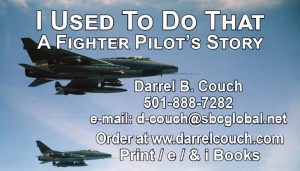19 February 1967 – Here’s Darrel’s story…
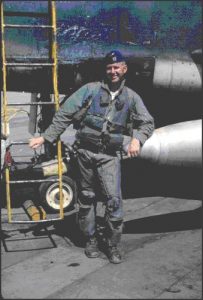 I USED TO DO THAT – A FIGHTER PILOT’S STORY by Darrel B. Couch
I USED TO DO THAT – A FIGHTER PILOT’S STORY by Darrel B. Couch
(Pages 181-184 from my book)
My Combat Ejection or Nylon Let Down
(First written April 2005 for an NMUSAF research project)
Purple Heart (PH): 614 Tactical Fighter Squadron; F-100D; No tail number; Phan Rang AB, Vietnam.
On 19 February 1967, while returning from my 106th mission. I was shot down in the traffic pattern at Phan Rang. Everything outside the perimeter of the base was VC/NVA controlled. We were shot at constantly. We could not see ground fire during the day, but by the muzzle flashes on the ground, you could follow the ground track of night-flying aircraft south of Phan Rang.
I most likely took one of those critical spot hits we called “Golden BBs”.
I was flying at 2,000’ AGL and at GCA traffic pattern speed, which was also near the F-100D best glide speed. At best glide speed at 4,500 FPM rate of descent, the ground impact was only about 22 seconds to go.
I was flight lead but had moved to #2 so my #2 could get a GCA approach he needed to maintain instrument currency. I heard and felt a muffled thump and felt vibrations as the engine made its last gasp. Immediately, I saw the engine instruments rapidly decrease to “O”. The aircraft engine flew west and the only other thing I heard was; “The Sounds of Silence”. Even so, I attempted an unsuccessful air start and switched to guard channel to radio my intentions.
The flight manual says, “During an engine air start, it can take up to 45 seconds to get engine power sufficient to maintain level flight”. My ejection decision was a “no-brainer”. I had only dropped 3-400’ behind and below the lead by the time I ejected. The entire “one & zero” ejection sequence only takes 1 second, but again, I was in adrenaline-induced slow motion. As it happened, I could feel every phase of the ejection sequence. After I ejected, with my “one & zero” lanyard attached to the parachute, I had a seat entanglement with the parachute.
I took the opening shock across the back of my neck and left shoulder. I looked up to make sure nothing was tangled, and the parachute had two panels torn from top to bottom. The only thing holding the chute together was the skirt and blowhole hems.
The next thing I saw was a Hun in a left turn. My first thought was the engine had started and I was in a lot of trouble. Then the Hun started going lower and I thought it was going to crash in the ocean. Not so, it was my #2 circling me. After a full 360, I saw the crash smoke. I got out my survival radio and contacted the flight and Phan Rang tower to confirm rescue was being scrambled. They were!!!
Of course, with my distractions, I forgot to deploy my survival kit, a mistake I never realized until I tried to run after landing. With the standard fighter 24’ chute with 2 panels missing I was coming down fast. Phan Rang was in the coastal turn area of SVN. The area was like Arizona. It had dust storms and cactus fences and very little vegetation. I could see I was going to land in a bare dirt field about 100 yards from a tree line.
We were always told to lie down in the grass and never go to the tree lines. That was where Charlie (AKA: Viet Cong) hung out. After landing, I released my canopy and saw I was like a target on a shooting range. I disregarded conventional wisdom and ran for the tree line. After I took cover, I could hear people whistling to either side of me. I called my flight members to get a strafing pass either side of my position, but the rescue chopper, (well trained in firefighting and rescue, but not experienced in combat rescue) our base firefighting H-43 chopper, was approaching and screamed to pull off, he might get shot down by the fighters. In fact, he should have pulled out and let the fighters give him fire cover.
By then, the flight members were out of fuel and had to land. It was too late to scramble an alert flight and there were no inbound mission returns within a suitable time range. The chopper then came in and landed 50 yards beyond my parachute and the firefighter got out to provide me any needed assistance.
Now it was decision time!! I had a chopper on the ground, an exposed firefighter, and 150 yards to run. I jumped and ran. For the entire trip, I could feel a bullet hitting me between the shoulder blades. I made it!! When I got in the chopper, the crew and Vice Wing Commander, Col. Edward P. (Ed) McNeff, were laughing their heads off.
I really could not see the humor until I tried to climb in and got hung up. I had my 38 S&W Combat Masterpiece revolver tied to my pistol belt with a piece of nylon parachute cord. The revolver had come out of the holster and I was dragging it behind me on a 6’ cord. Of course, I was in shock and my mouth was so dry I could barely croak.
After I got to the Wing Commanders’ office, the base safety officer wanted to go look at the crash site. The Army liaison, 101st Airborne Major, wanted to secure the area with a platoon, but it was approaching sundown and safety was in a hurry. They took 5-6 people to the site in the same chopper.
At about 50’ AGL, Charlie opened up on the chopper. It took several hits. One went through the chopper skid, the floor, bounced off the engine support bulkhead and hit the safety officer, Ralph Beekman, right between the eyes, and dropped harmlessly on the floor between his legs. That is a really scary way to get a souvenir. (No injury no PH) Back at the Commander’s office, he was so pale-faced; you could not see his lip line. Some months later, an army sweep was done in the area. They found the 20MM cannons and gun sight from my aircraft in a cave.
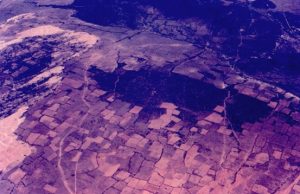 I landed in the lower center of this photo. My F-100D landed near the sand dunes to the left. Photo DBC. Go to Google Earth today and the area looks almost the same. Due to the seat entanglement with my parachute, muscles under my left scapula were torn and my shoulder sags ½ – ¾ inch. I had five vertebra compression fractures (2 cervical, 2 thoracic, & 1 lumbar). Purple Heart awarded. The flight surgeon released me to fly as soon as I wished. I flew three days later.
I landed in the lower center of this photo. My F-100D landed near the sand dunes to the left. Photo DBC. Go to Google Earth today and the area looks almost the same. Due to the seat entanglement with my parachute, muscles under my left scapula were torn and my shoulder sags ½ – ¾ inch. I had five vertebra compression fractures (2 cervical, 2 thoracic, & 1 lumbar). Purple Heart awarded. The flight surgeon released me to fly as soon as I wished. I flew three days later.
Epilogue: I never told the flight surgeons, for the remaining 9.5 years of my career, that I could not turn my head if I was pulling more than 2 G’s. 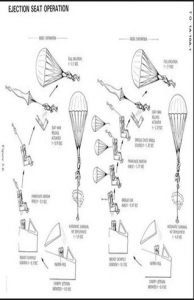 I would turn my head the way I wanted to go before putting on the “G” load. I also had back, shoulder, and neck pain and muscle twitching in my left hand and arm. I flew this way for the rest of my career which included 320 more combat missions (94 F-100, 220 O-1, and 1 A-1H), 5 more airplanes, and about 2,000 hours.
I would turn my head the way I wanted to go before putting on the “G” load. I also had back, shoulder, and neck pain and muscle twitching in my left hand and arm. I flew this way for the rest of my career which included 320 more combat missions (94 F-100, 220 O-1, and 1 A-1H), 5 more airplanes, and about 2,000 hours.
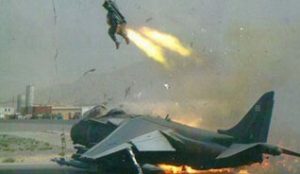
Shortly after the ejection, the flight surgeon did tell me they could operate on the shoulder, but there was a 50/50 chance of making it worse or better. It was best to leave it alone. I did not know until I had 2 strokes in 2004 that I also had blood flow restrictions in my vertebral arteries and reduced blood flow to the back of my brain. Turning my head fully in any direction cut my rear brain blood flow completely off.
After my retirement in 1976, from about 1985 until October 2004, I had frequent vertigo (spatial disorientation) and dizzy spells. The idiots at the VA, without medical test one, diagnosed this as hyperventilation and prescribed Dramamine. I told them I was a pilot and knew about hyperventilation and this was not it. It took a world-renowned neurologist from the University of Arkansas for Medical Sciences (UAMS) 3 years to convince the uneducated VA feather merchant claims adjusters otherwise.
Unknown then, but now confirmed, my injuries and blood flow problems to my brain also caused some anger issues that got me volunteered as a FAC to go fly the 0-1 Birddog. Two specific issues were getting mad at a crew chief who left his 11.5-inch screwdriver jammed in my ejection seat handle and refusing to fly a night weather sky spot mission in a bird with an inoperative standby inverter. If I had a flameout there would be no instrument lights or battery-powered engine ignition. These stories are written.
In the 0-1, I had to look down a lot and I could not hold my head up. I flew 220 missions mostly left-handed with my right elbow on the right door map case and my chin resting in my hand. In 1969, I turned down a request by SAC-rated Personnel, to go fly the SR-71. At Little Rock AFB, I had learned the SR-71 physical requirements and I knew I could not pass the required astronaut physical. After retiring, I was having so many problems like vertigo dizzy spells, and almost constant headaches I turned down offered jobs with Federal Express, Falcon Jet Instructor for the Coast Guard, and Aircraft Commander (AC) jobs for 3 other cargo airlines.
Forty-one years after the ejection, including 32 years of frustration with the VA, as a result of residuals of my injuries (and they are a very long list) and being rated unemployable, I am now rated 100% permanent and total disabled, backdated to 6/2005. After I was shot down and should have been grounded, I earned 25 additional awards and decorations. Those included the Silver Star, 3 DFC’s, and 12 Air Medals.
Epilogue-2: February 12, 2014. Major General Edward P. (Ed). McNeff, USAF Ret. reviewed my book. I learned something I never knew. His comment was, “I can still see that long-range shooter’s bullet hole appearing in the chopper bulkhead about 12” above my head.
March 23, 2013: Johan Ragay, the collector of Pedro (Call sign for all USAF rescue helicopters) information, has my rescue story. It says the chopper landed where I asked them to land, between my parachute and the trees. Combat confusion & time. Who’s?
For a signed copy of my book, call or email me
-Darrel Couch
For more about Darrel see his bio page at https://supersabresociety.com/biography/darrel-b-couch/

